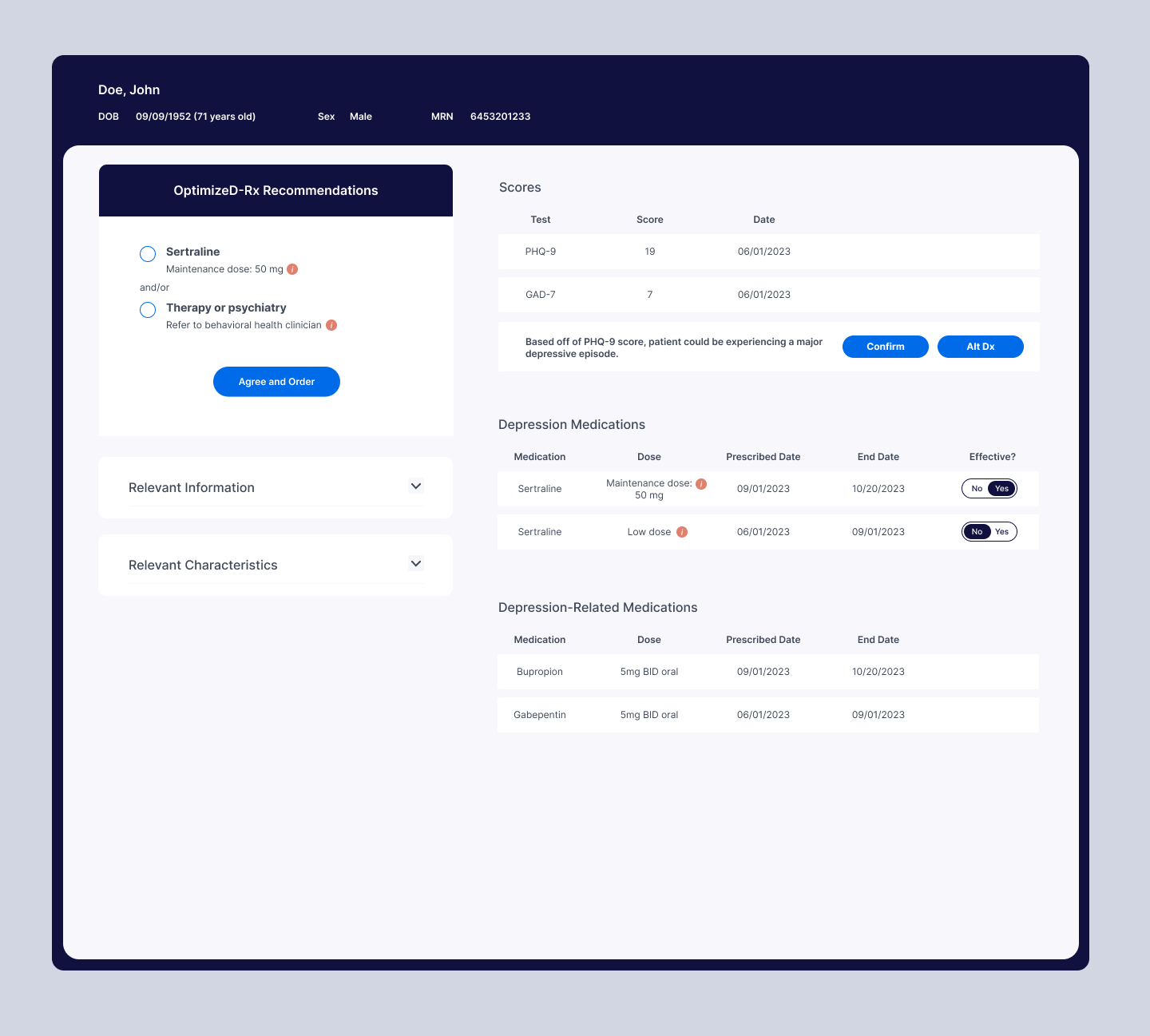OPTIMIZE-D RX
How providers can use AI-enabled clinical support tool to better manage the treatment of patients with depression.
Client: UCSF Department of Epidemiology and Biostatistics
Year: 2023-2024
My Role: Lead product designer
Team: Junior designer, solutions architect, developer
Challenge
How might we help primary care providers make better clinical decisions when treating patients with depression?
Solution
A clinical decision support system (CDS) that provides care management recommendations based on depression symptoms.
Duration
4 months
Our impact
Led the design of an AI-powered prototype now in development for real-world clinical trials. This innovation pioneers the integration of AI into depression treatment workflows, transforming how clinicians leverage data-driven insights to personalize care and improve patient outcomes.
Design Process
-
1. Identified the challenge
Discussed current state and challenges. clearly articulated client’s vision, identified the proper audience, sketched out logic tree, and investigated existing algorithms we can leverage.

-
2. Laid out current and future workflow
Co-created storyboards with clients to validate the perceived challenges in the current state and visualize how the app can be used and integrated into their future workflow.

-
3. Conducted focus groups
Interviewed providers on current management practice and sentiments on AI and presented initial wireframe to initiate co-design and identify when it is most appropriate to use in clinic.

-
4. Uncovered insights through synthesis
Depression management is complex; most critical scenarios are of patients with co-morbidities and cross titrations.
Clinicians want to save time and need confidence managing complex cases.

-
5. Co-designed low-fidelity mockups
Co-designed with clients to collaboratively think through how this tool might solve the challenge, ensuring shared accountability and responsibility.
Co-sketching allowed clients to brainstorm on more ideas.

-
6. Collaborated with solutions architect
Needed additional technical exploration to understand the nuances of data integration for these complex situations.

-
7. Gathered more user feedback
Conducted more focus groups to get feedback on first designs.
Evaluated usefulness in critical complex situations.
Evaluated barriers and sentiments around using AI to aid clinical decision making, specifically perceived hesitations with trusting this tool when used in practice.

-
8. Iterated on designs and scenarios
Iterated three times and received feedback from the users via focus group sessions. We focused on:
Information that would be most valuable in making treatment decisions.
How information should be presented, and other visual aids that are important in the decision-making process.

-
9. Collaborated with technical team to build MVP
Ensured technical team was involved early in design process.
Welcomed questions and ideas for improvement.
Walked through algorithms and decision tree to make sure decisions are reflected in the prototypes and technical team understands the desired outcome.

Design Iterations
v2
v3
MVP
Learnings
-
Incorporating AI in clinical decision making for depression care threw a curve ball on us. We thought we could leverage other decision support tools, but the complexity of the cases involved a much more arduous “back and forth” with our clients to make sure our MVP is solving for the hardest problems to date.
-
This process helped uncover some of the nuances around the different use cases and different populations for this AI-assisted clinical decision support tool. If we solve for this hard problem now, we hope that this sets precedence for other clinical decision support tool across different disease types.





